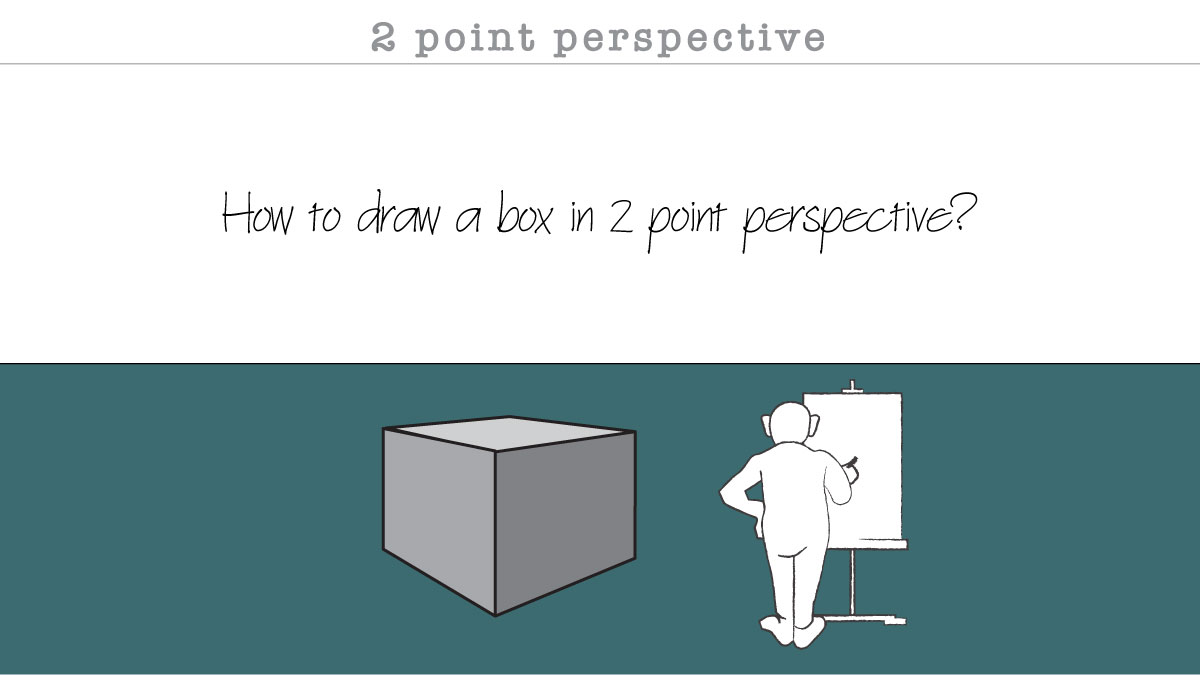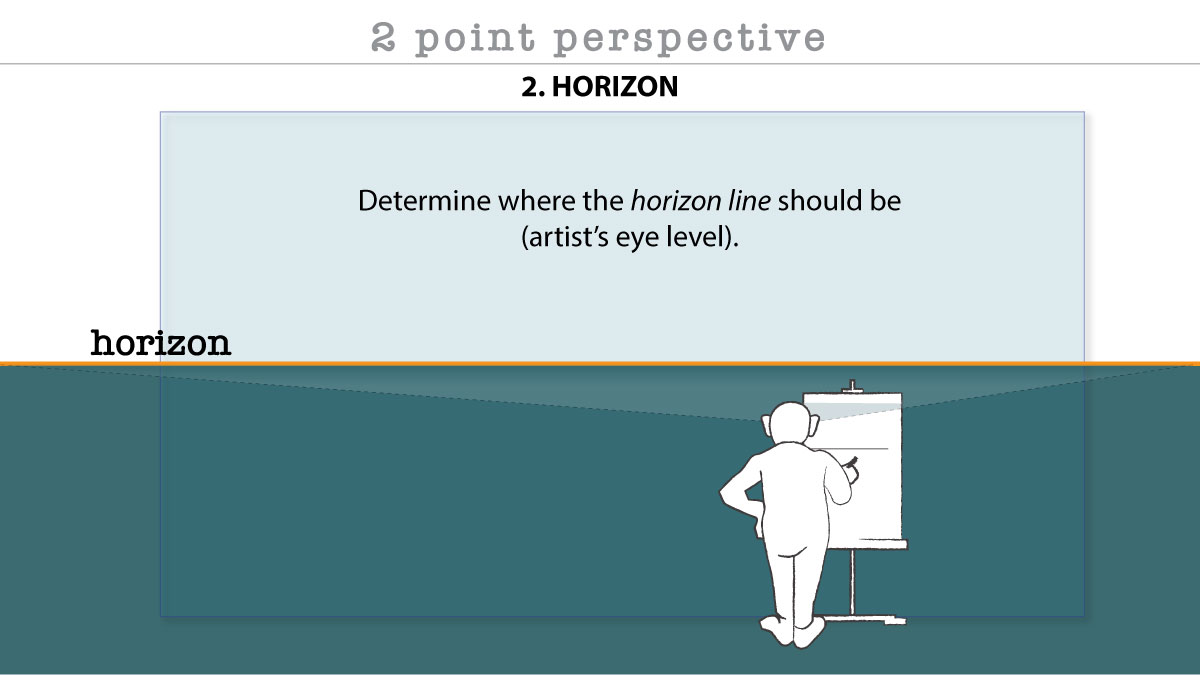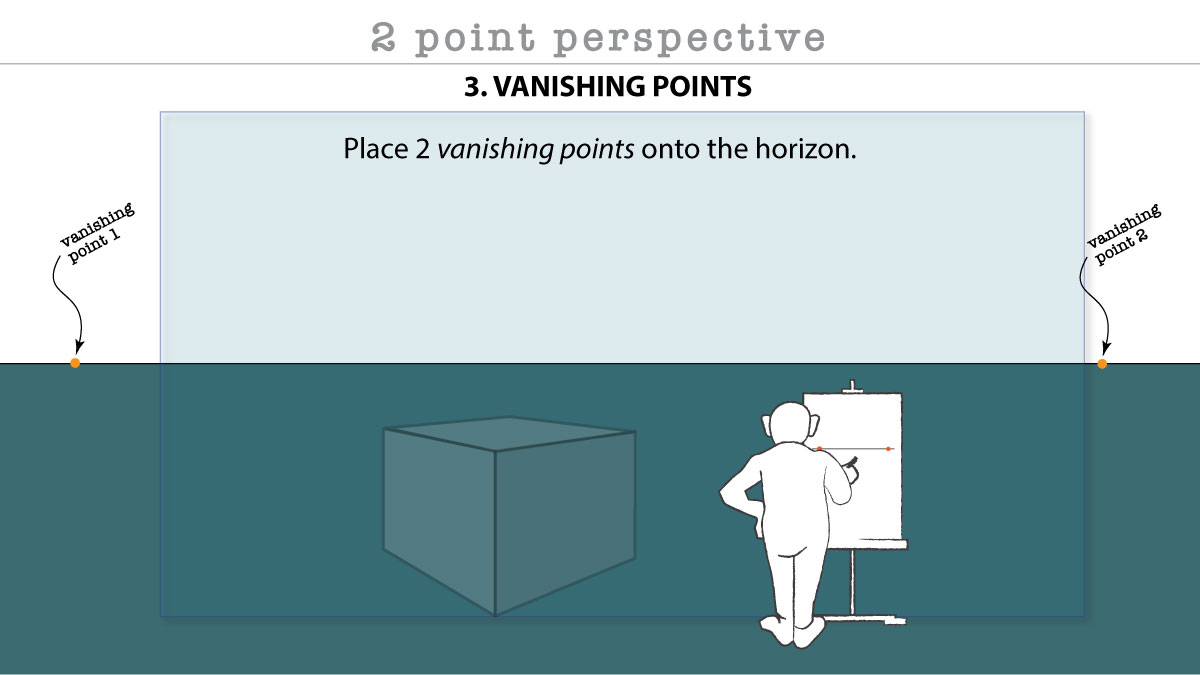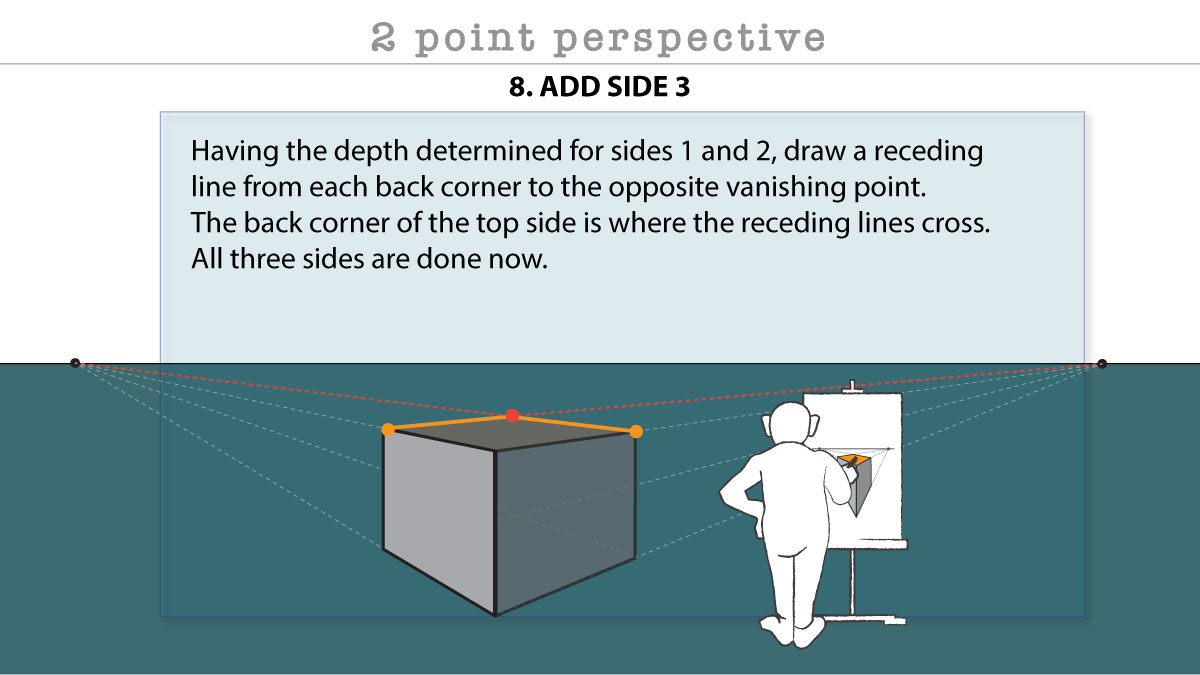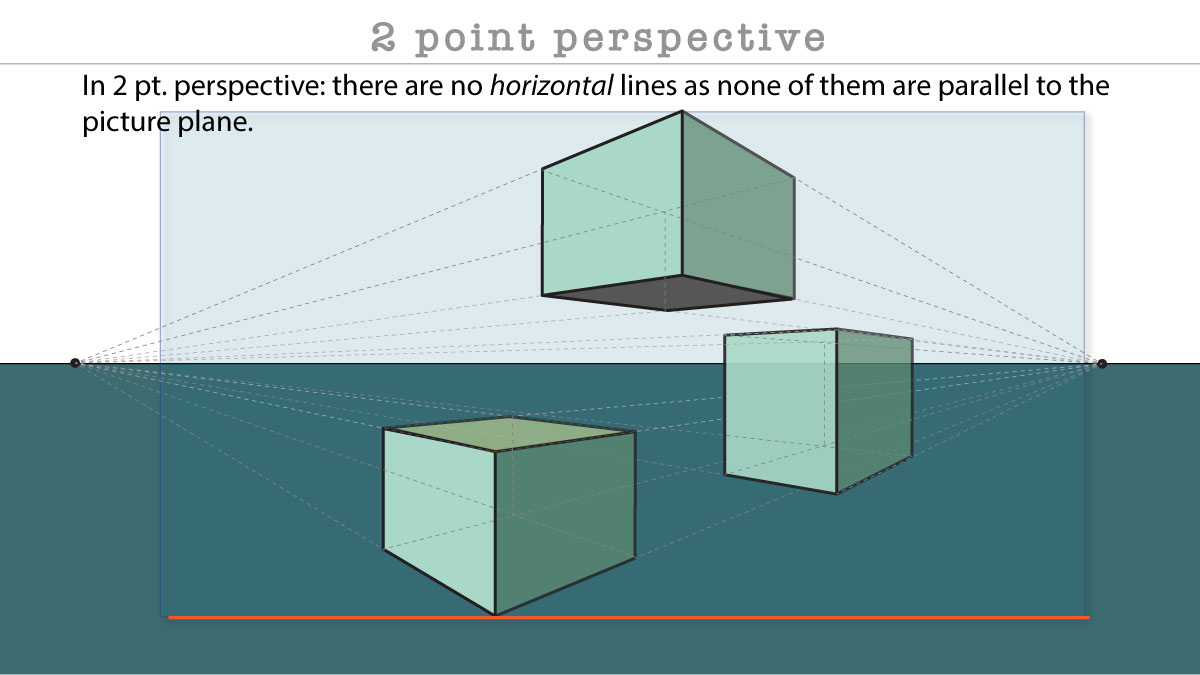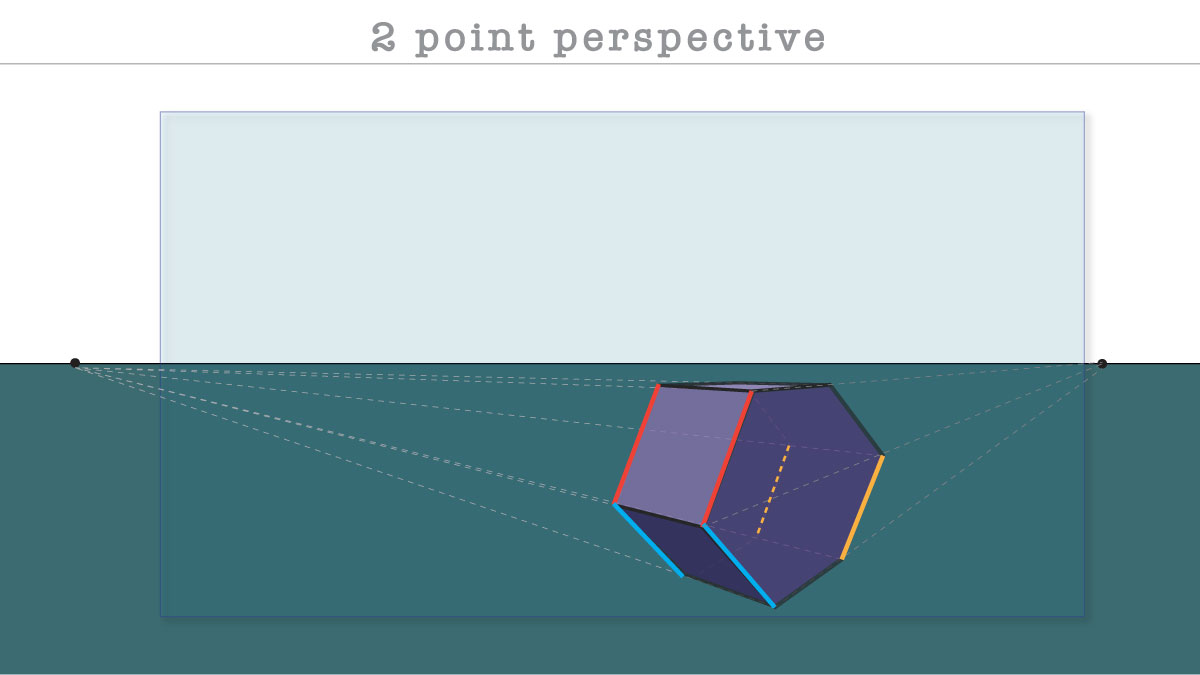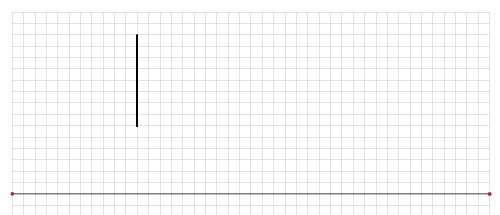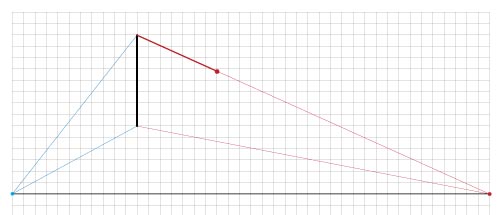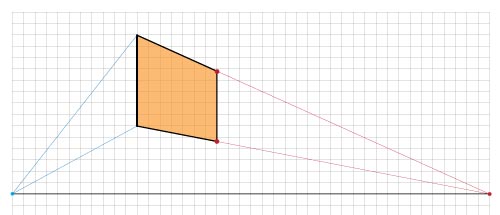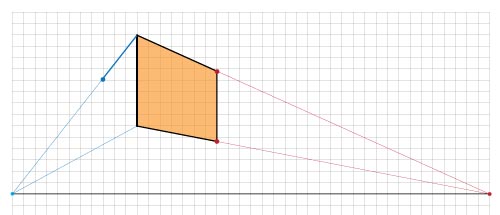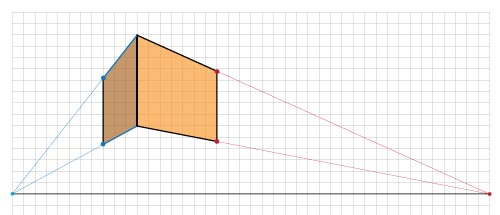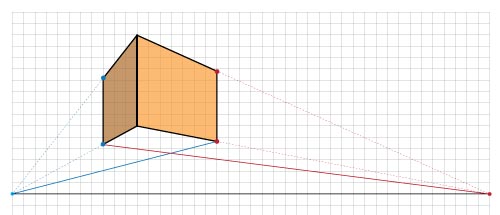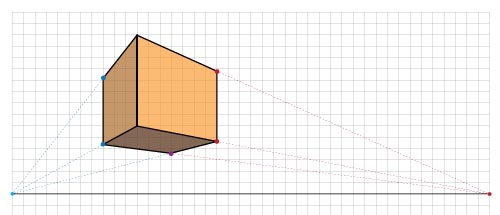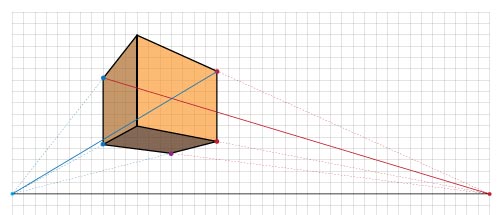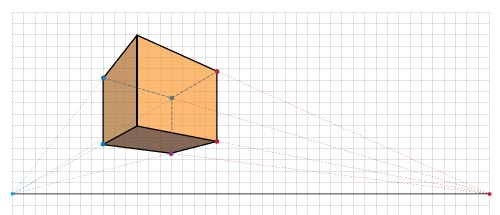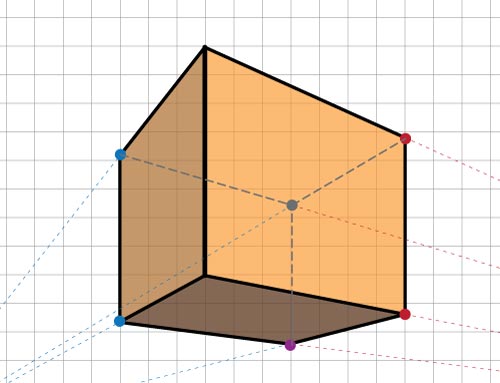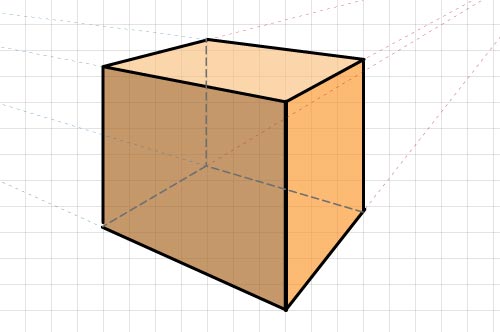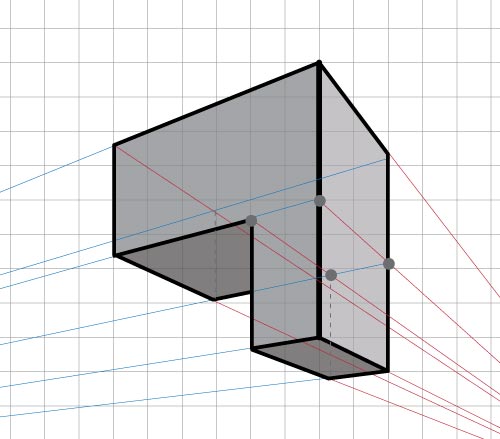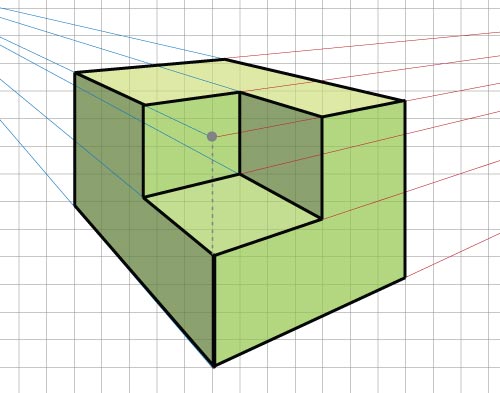
Is one of the sides parallel to your picture plane? No....
Is one of the edges in your picture plane?
If yes - then 2 point perspective is your choice!

Determine where the horizon line should be
(artist’s eye level).
Draw a straight line across.

Place 2 vanishing points onto the horizon.
Draw them as far apart as you can.
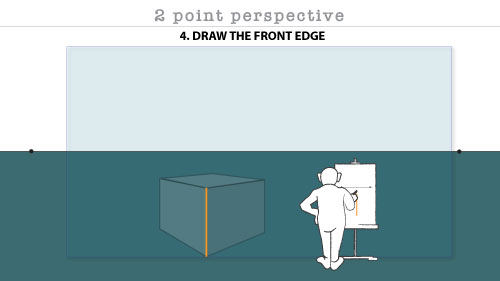
Draw the closest part - the front edge
This is the only part of the box where all measurements can be done.
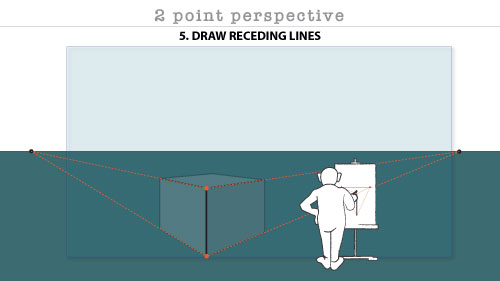
Draw the receding lines by connecting the top and the bottom of the front edge to the vanishing points.
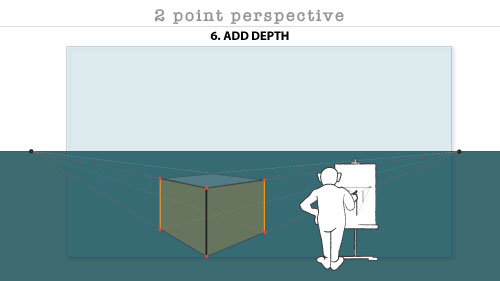
Determine the depth of the box by connecting two receding lines with a vertical line. This is a "guess" work.
Do this for the both sides.
Make sure you connect the two receding lines that belong to the same side.
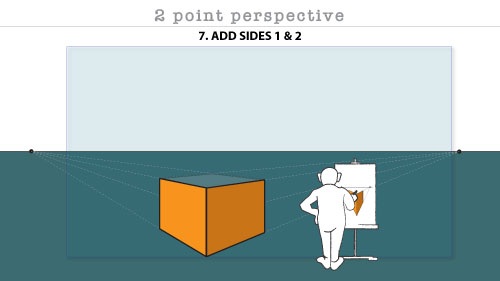
Your 1st and 2nd sides are done!
You can outline them now.

Having the depth determined for sides 1 and 2, draw a receding line from each back corner to the opposite vanishing point.
The back corner of the top side is where the receding lines cross.
All three sides are done now.

Complete the box by defining the back corner even though it is not seen from the front.
Adding the hidden sides and corners will assist you in shadow construction, adding other elements, and just confirming that your two-point perspective is accurate.
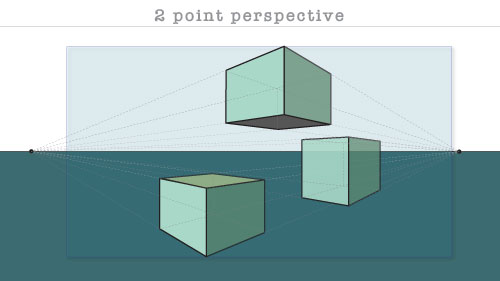
Based on the position of the box to the vanishing points and horizon line - you can see 3 or 2 sides.
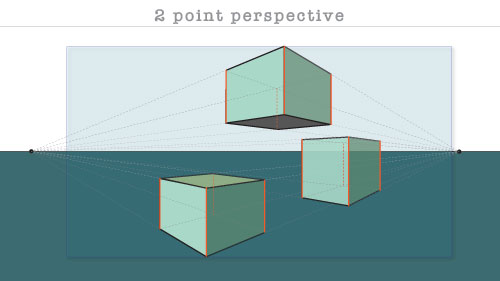
In 2 pt. perspective: all vertical lines stay vertical.

In 2 pt. perspective: there are no horizontal lines as none of them are parallel to the picture plane.
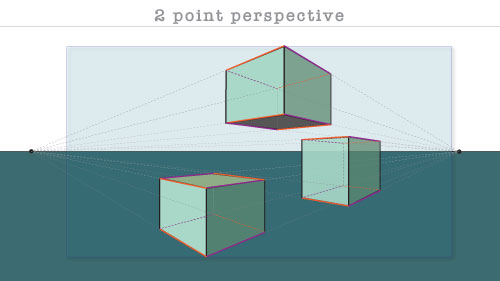
All horizontal lines show depth and are parallel in real life - in 2 point perspective they become receding lines and go to one of the vanishing points.
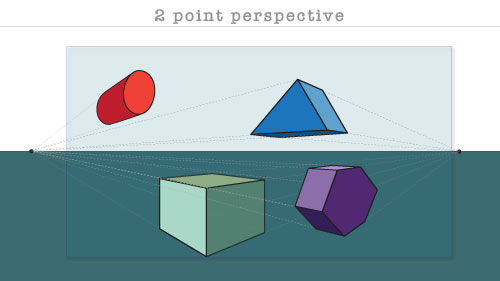
Same rules and steps apply to any form.

